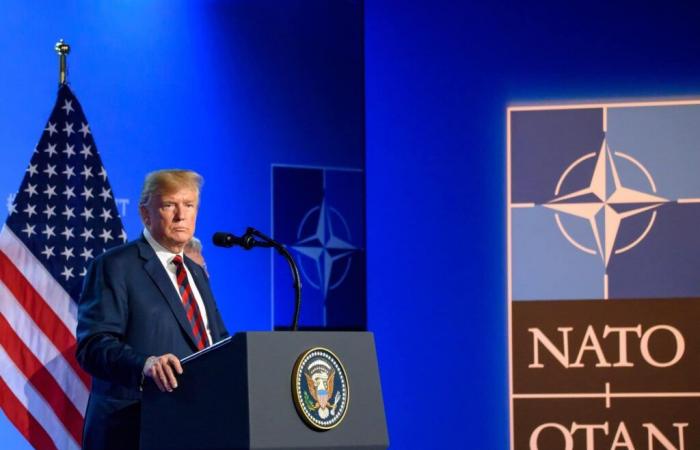On November 7, 2024, details of United States President-elect Donald Trump's plans to end the war in Ukraine were revealed by the Wall Street Journal. The approach, marked by strategic concessions, promises to profoundly transform the dynamics of the conflict and the relations between the key actors, namely Ukraine, Russia, and NATO.
Ukraine: a peace plan focused on the status quo and territorial concessions
One of the central points of the proposal supported by Trump's team and which he could try to propose once he returns to the White House in January 2025 is to freeze the conflict on the current front line, thus consolidating the Russia's occupation of nearly 20% of Ukrainian territory. This plan de facto endorses Russian conquests, an approach which contrasts sharply with the strategy of the Biden administration, more aligned with unconditional support for Kyiv's decisions regarding the start of any peace process.
In addition to this freeze, the plan provides for the establishment of a demilitarized zone of 1,300 kilometersmonitored by European troops. American forces would be excluded from this peacekeeping process. This approach aims to limit direct US involvement and shift responsibility to its European allies, fulfilling Trump's campaign promise to disengage America from foreign conflicts.
Trump's plan for Ukraine and Russia: who wins?
From Moscow's point of view, the planned plan would represent a strategic victory. The implicit recognition of its territorial gains without requiring military concessions strengthens its position on the international scene. Furthermore, imposing a moratorium on Ukraine's membership in NATO for at least 20 years reduces the strategic pressure that the alliance represents for Russia.
For Ukraine, this approach means painful compromise. President Volodymyr Zelensky has repeatedly reaffirmed his country's desire to preserve its territorial integrity. Accepting such a plan would amount to ceding part of the country's sovereignty, while giving up long-term security guaranteed by NATO. Although U.S. weapons would continue to flow to Ukraine to deter future attacks, losing the prospect of membership in the alliance would significantly weaken its strategic position.
Furthermore, the creation of a demilitarized zone, although it may limit direct clashes, does not guarantee long-term peace. History has shown that such areas can become points of tension or areas of potential military incidents, especially if the front line remains contested by either side.
A risky bet: Trump's motivations
Donald Trump's desire to achieve an American strategic withdrawal and to minimize military spending abroad is at the heart of this proposal. “ We are not sending American men and women to keep the peace in Ukraine… Let the Poles, Germans, British and French do it WSJ reported a member of Trump's team as saying, underscoring the pragmatic approach of the incoming administration.
However, this strategy is doubly risky. It relies on the cooperation of European allies, whose willingness to contribute to such a peace effort may vary. Moreover, by consolidating Russia's gains, Trump risks reinforcing a diplomatic precedent that could inspire other territorial claims around the world.
Table of key points of the proposed plan
| Appearance of the plan | Details | Likely consequences |
|---|---|---|
| Freezing the front line | Recognition of territories occupied by Russia | Strategic advantage for Moscow |
| Suspension of NATO membership | Deferral of minimum 20 years | Weakening of Ukraine's strategic ambitions |
| Demilitarized zone monitored by Europe | 1 300 km the neutral zone | Complex peacekeeping, dependent on allies |
| Exclusion of American troops | Responsibility entrusted to European allies | Reduction of American involvement |






